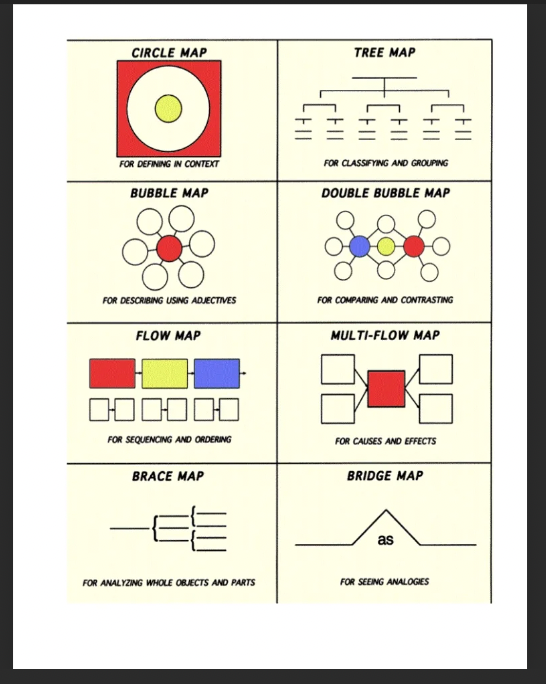Using Thinking Maps with Multilingual Learners
Why and How
Thinking maps can be a useful foundational tool for Multilingual Learners (MLs).
Why would you want to use thinking maps for MLs.
1. Visual representation: Thinking maps provide a graphic representation of thoughts and ideas. They allow students to “see” the ideas and how they connect.
2. Organization: Thinking maps help MLs organize their thoughts in meaningful, small chunks that are less text heavy.
3. Vocabulary development: A thinking map encourages the use of specific vocabulary connected to a concept or category. As MLs create their maps, they label the branches, write descriptions, and/or provide examples based on their lived experiences. The process encourages meaningful language use that reinforces vocabulary acquisition.
4. Collaborative learning: Thinking maps can facilitate collaborative learning experiences among MLs and their peers. As al share their ideas for connections about the content and their backgrounds, compare and contrast ideas, and engage in discussion about it all, they get to know each other and FROM each other in a less language heavy task.
Eight basic maps as developed by researcher, Dr. David Hyerle.
Here's some fabulous visuals for using Thinking Maps with MLS:
To create your own templates, here’s just one of many sites that provide online tools: links for thinking map templates
Who has used thinking maps?
How did it work?
What online tools would you recommend?
Please click the like button if this was useful.
Don't miss what's next. Subscribe to Helping Multilingual Learners Thrive:
Share this email:






